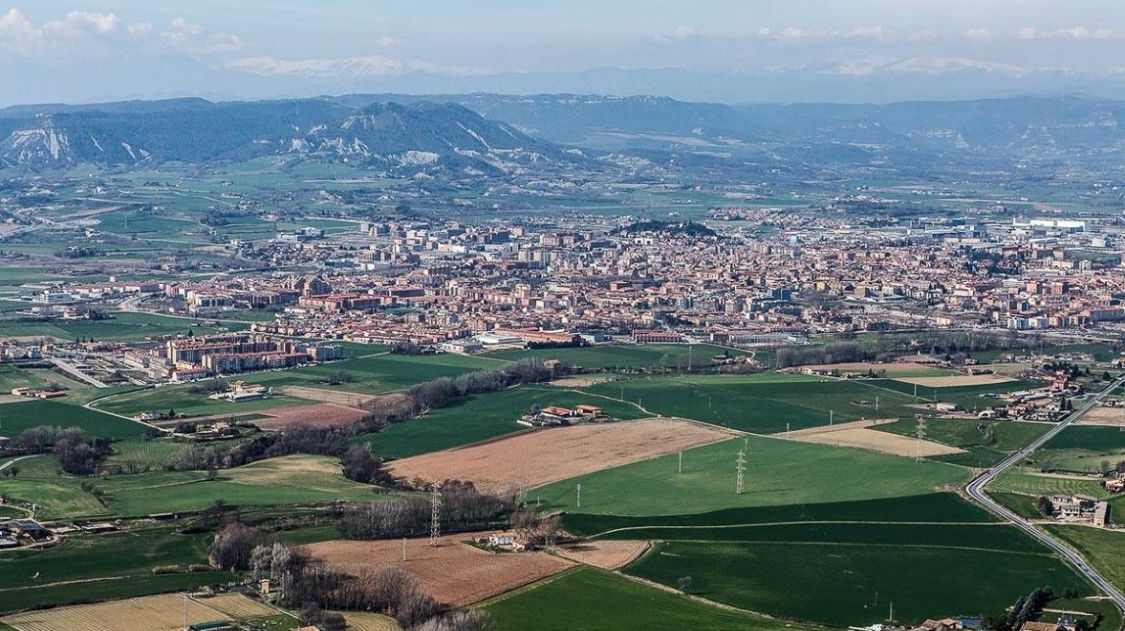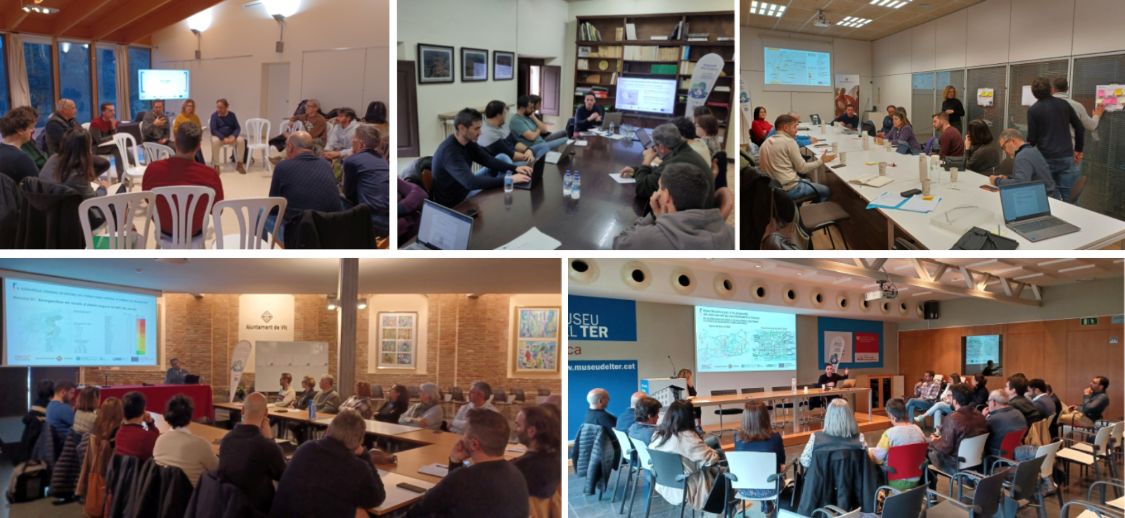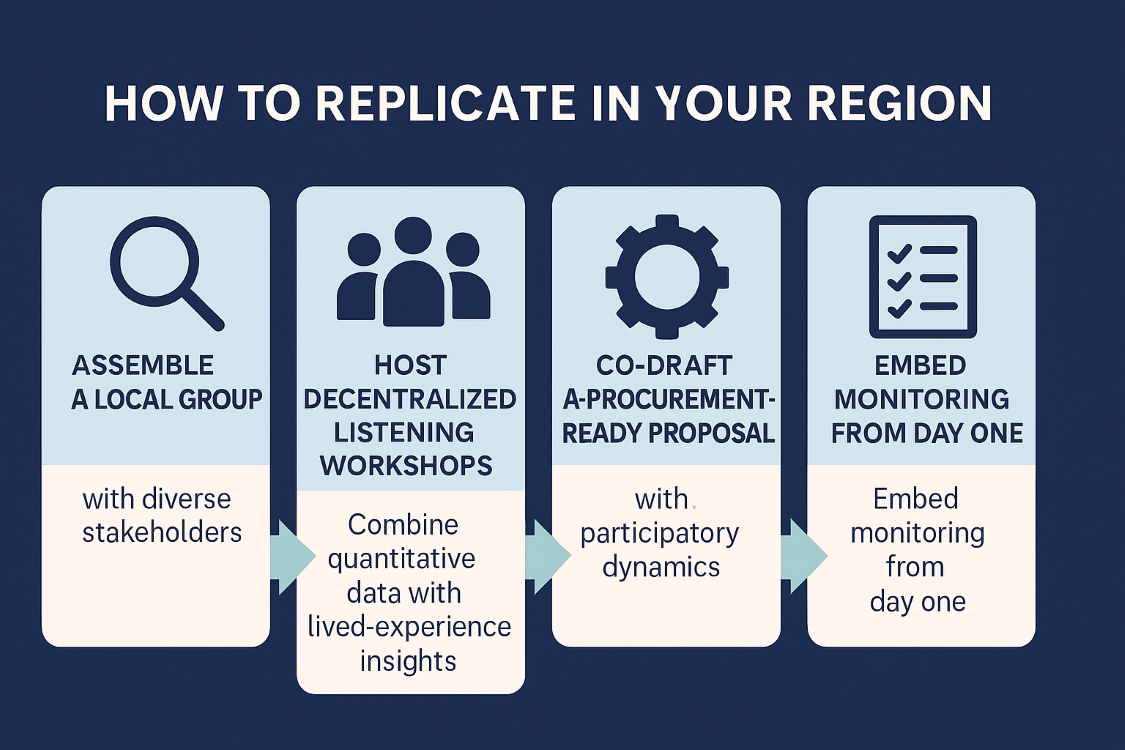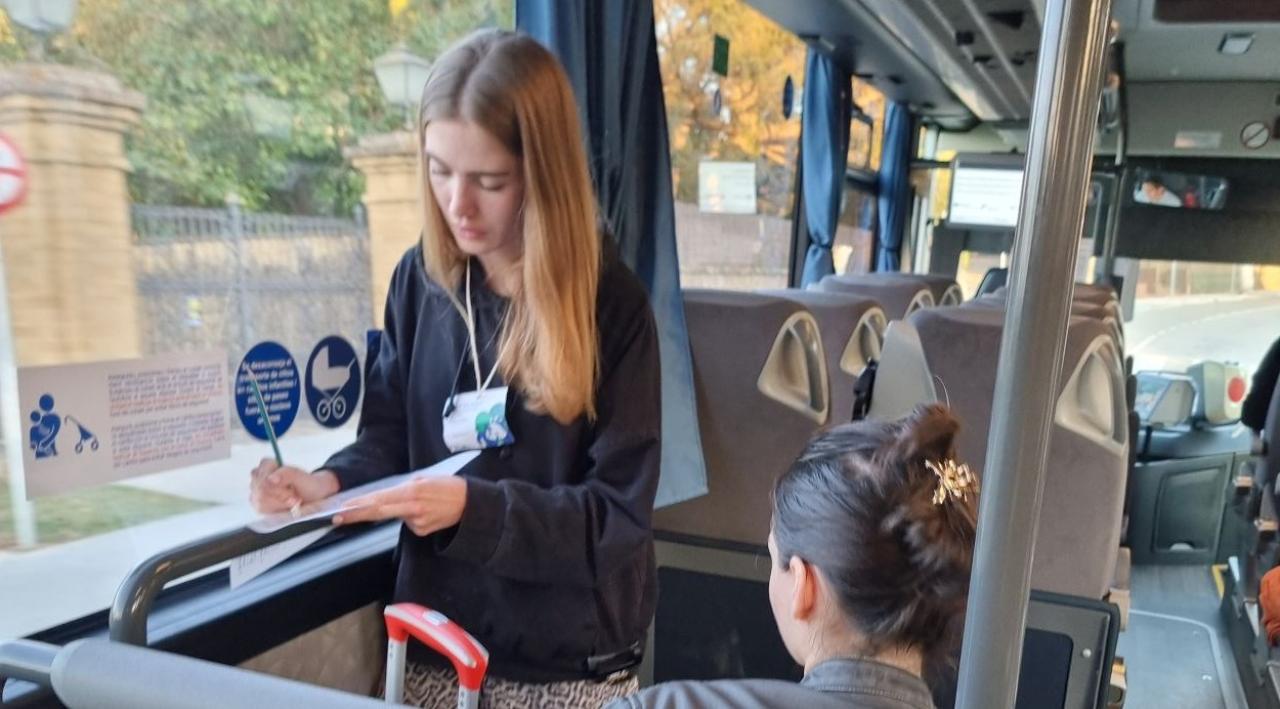Why this case matters beyond Catalonia
Osona is a predominantly rural county in central Catalonia, with a mix of small towns, villages, and two cities (Vic, the capital with 49.849, and Manlleu with 21.291), surrounded by mountains and agricultural land. The adjacent Lluçanès plateau is even more rural and sparsely populated. Together, they form a diverse territory of 169.724 inhabitants where mobility challenges stem from geographic dispersion, low population density, and centralized services.

While firmly rooted in local realities, the case of Osona reflects mobility challenges shared by many rural and semi-rural territories across Europe: fragmented transport networks, reliance on private cars, limited access to jobs and essential services, and aging populations. This initiative demonstrates how participatory planning, territorial equity, and cross-sector dialogue can help build consensus and empower local actors to present a united, credible position when engaging with higher levels of governance.
Current snapshot: interurban bus services in Osona and Lluçanès
To contextualize the planning efforts, the following figures offer a snapshot of the existing interurban bus system as of 2025:

This data underlines both the scale and imbalance of the current network—ranging from dense corridors like the e12 to near-symbolic services in remote areas—justifying the need for a more equitable, efficient, and adaptive transport model.
Preparing for 2028: a turning point for regional transport
The county of Osona is seizing a unique opportunity to redesign its interurban bus network in response to upcoming structural changes in regional public transport contracts. In 2028, current concessions for interurban bus services across Catalonia will expire, obliging the regional government of Catalonia to re-tender the entire network.
Recognizing the 2028 milestone as a critical moment for change, the objective is clear: to build a shared, well-informed vision of the future of mobility and become a credible, proactive stakeholder in discussions with higher levels of government. To that end, Osona and Lluçanès are proactively designing a locally grounded proposal that places local voices and data at the heart of the process, ensuring the resulting solutions are both technically robust and socially rooted.

Maping the territory. Source: Beyond the Urban.
The participatory process began during the 2nd and 3rd URBACT Local Group meetings, where early discussions focused on identifying problems, dysfunctions, and the need for change in the existing interurban transport system. However, as the scope and significance of the proposal being drafted became increasingly clear, it was evident that a deeper, territory-wide understanding was needed. This led to the decision to organize five dedicated territorial workshops, expanding the conversation and ensuring that the voices and specific needs of all subregions were meaningfully included.
Listening to the territory: five participatory workshops
From February to April 2025, the Project and URBACT Local Group (ULG) coordinator, together with the county mobility councillor, organized a series of five territorial workshops across Osona and Lluçanès. These sessions—held in Lluçanès, Bisaura, Osona South, Osona Central and Osona North—brought together municipal governments, transport-related organizations, local associations, and private stakeholders to present a draft proposal for the new interurban bus system, gather feedback, and identify previously overlooked needs.
Hosting workshops in peripheral areas—rather than the county capital—was a deliberate strategy to maximize inclusiveness and demonstrate genuine interest in local realities. This decentralization helped increase attendance and surfaced specific challenges that would have remained invisible from a central perspective. It also made participation easier for small municipalities where attending events in Vic can involve significant time and logistical constraints.

Territorial meetings in rural areas (Lluçanès, Bisaura, South Osona, Vic and Manlleu influential areas). Source: Beyond the Urban.
Participants represented 40 of the 52 municipalities (covering 93.5% of the population), along with supra-municipal entities, rural development agencies, civil society, and business representatives. Each session included a presentation of the current service map and the proposed improvements, addressing line frequency (with clock-face scheduling), underserved areas, access to industrial parks, and fare zone inconsistencies.
Shared challenges, common goals
The five workshops revealed a strong consensus on key priorities to improve Osona’s interurban mobility. While needs varied by area, several cross-cutting challenges emerged:
Demand Responsive Transport (DRT) was widely discussed, especially in rural zones. A “cloud of points” model—vehicles responding to demand within a defined area—was preferred over semi-flexible lines. Simplicity, accessibility (including non-digital options), and guarantees of minimum service coverage were considered essential. Participants also called for compatibility with underused school buses and pilot testing before full deployment.
Reinforcing public transport with school bus lines gained broad support, particularly in rural areas. Suggestions included ensuring safety through digital reservation tools and adapting schedules to serve public needs outside school hours, including summer and weekends.
Connecting employment areas was a top concern. Many industrial zones lack direct service despite proximity to existing routes. Participants stressed the need for coordination with local employers to match work shifts and improve “last-mile” access by foot or bike.
Fare integration and equity emerged as a structural barrier. The current fare zone system—based on distance from Barcelona—ignores local mobility patterns and penalizes remote users. Calls for a unified fare zone across the county and more access to discounted multi-ride tickets were widespread.
Service frequency and weekend availability were common concerns across rural and urban areas. Proposals included better alignment with train schedules and expanded weekend and evening options, particularly for youth. A night bus to Barcelona via the C-17 corridor was well received.
Information and infrastructure also require improvement. Participants demanded clearer signage, more intuitive timetables, updated stop mapping, and a unified digital platform to support intermodality and user access. The need for a clear communication strategy was stressed up; to ensure the population understands how and why the new system will work—and how it will improve their daily lives.
Connectivity with Barcelona remains a pressing issue, especially until the R3 rail line is upgraded. Express bus routes—especially from the northern corridor (Torelló–Manlleu–Tona)—were proposed as a viable alternative.
Scattered settlements and urbanisations need tailored services such as on-demand stops. Examples include La Roca (Taradell) and Montmany (Seva), which currently lack regular access.
Local leadership and participation were seen as crucial. Municipalities want a stronger role in shaping routes and communicating changes. Osona’s initiative to lead this process ahead of the 2028 concession renewal was broadly praised.
Next Steps
All the feedback and technical analysis from the workshops will be integrated into a draft proposal for the new interurban bus network in Osona and Lluçanès. This document will be shared with participating municipalities and stakeholders for final input before submission to the Catalan Department of Territory later this summer.
This process exemplifies how small and medium-sized territories can lead systemic change through bottom-up governance, local engagement, and cross-sector collaboration — aligning perfectly with the goals of the URBACT Beyond the Urban programme. The Osona case offers valuable inspiration for regions across Europe grappling with similar challenges in rural-urban connectivity and public transport innovation.



